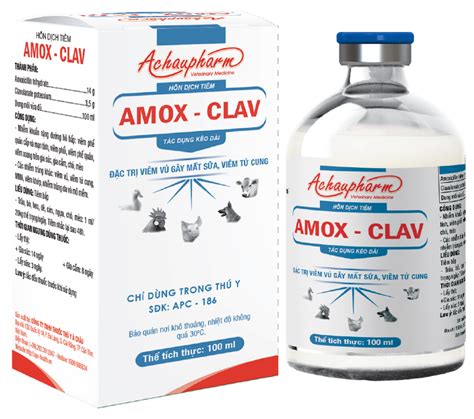Amox Clav, also known as Augmentin, is a combination antibiotic medication that consists of two active ingredients: amoxicillin and clavulanic acid. This potent combination is designed to fight off bacterial infections by inhibiting the growth of bacteria and ultimately killing them. The unique synergy between these two components makes Amox Clav an effective treatment for a wide range of bacterial infections, including those affecting the skin, respiratory tract, urinary tract, and abdomen.
How Amox Clav Works
Amoxicillin: This is a penicillin-type antibiotic that works by stopping the growth of bacteria. It interferes with the formation of the bacterial cell wall, which is essential for the bacteria’s survival. Without a functional cell wall, the bacteria cannot survive, and the infection is cleared.
Clavulanic Acid: This component is a beta-lactamase inhibitor. Beta-lactamase is an enzyme produced by some bacteria that can make them resistant to amoxicillin and other penicillin-type antibiotics by breaking down these drugs. Clavulanic acid inhibits this enzyme, protecting amoxicillin from degradation and allowing it to reach effective concentrations to kill the bacteria.
Uses of Amox Clav
Amox Clav is prescribed to treat various bacterial infections, including:
- Respiratory Tract Infections: Such as pneumonia, bronchitis, and sinusitis.
- Skin and Soft Tissue Infections: Including cellulitis and animal bites.
- Urinary Tract Infections: Such as cystitis and pyelonephritis.
- Abdominal Infections: Including infections of the stomach, small intestine, and colon.
Administration and Dosage
Amox Clav is available in various forms, including tablets, chewable tablets, and oral suspension. The dosage depends on the type and severity of the infection, as well as the patient’s age, weight, and kidney function. It is essential to complete the full course of treatment, even if symptoms improve before finishing the medication, to ensure that the infection is fully cleared.
Side Effects and Precautions
Like all medications, Amox Clav can cause side effects, which may include diarrhea, nausea, vomiting, and rash. In rare cases, it can cause more severe reactions, such as allergic reactions, liver damage, or Clostridioides difficile (C. diff) infection. Patients with a history of allergy to penicillin or other antibiotics should inform their healthcare provider before taking Amox Clav. Additionally, patients with kidney or liver disease may need adjusted doses.
Important Considerations
- Antibiotic Resistance: The misuse or overuse of antibiotics like Amox Clav can lead to the development of antibiotic-resistant bacteria, making infections harder to treat.
- Interactions with Other Medications: Amox Clav can interact with other medications, such as blood thinners, methotrexate, and probenecid. Patients should disclose all medications they are taking to their healthcare provider.
- Pregnancy and Breastfeeding: Amox Clav is generally considered safe during pregnancy and breastfeeding, but it’s crucial to consult with a healthcare provider before taking any medication during these periods.
In conclusion, Amox Clav is a powerful antibiotic that is effective against a broad spectrum of bacterial infections when used appropriately. Its unique combination of amoxicillin and clavulanic acid makes it an essential tool in the fight against infections that might otherwise be resistant to treatment with amoxicillin alone. However, like all antibiotics, it should be used judiciously and under the guidance of a healthcare professional to minimize the risk of side effects and the development of antibiotic-resistant bacteria.
What is Amox Clav used for?
+Amox Clav is used to treat various bacterial infections, including respiratory tract infections, skin and soft tissue infections, urinary tract infections, and abdominal infections.
How does Amox Clav work?
+Amox Clav works by combining amoxicillin, which stops the growth of bacteria, with clavulanic acid, which protects amoxicillin from being broken down by bacteria, allowing it to effectively kill the bacteria.
What are the side effects of Amox Clav?
+Common side effects include diarrhea, nausea, vomiting, and rash. Rare but more serious side effects can include allergic reactions, liver damage, and C. diff infection.
Can I take Amox Clav if I am pregnant or breastfeeding?
+Amox Clav is generally considered safe during pregnancy and breastfeeding, but it’s essential to consult with a healthcare provider before taking any medication during these periods.
Why is it important to finish the full course of Amox Clav?
+Finishing the full course ensures that the infection is fully cleared and reduces the risk of the bacteria developing resistance to the antibiotic.



